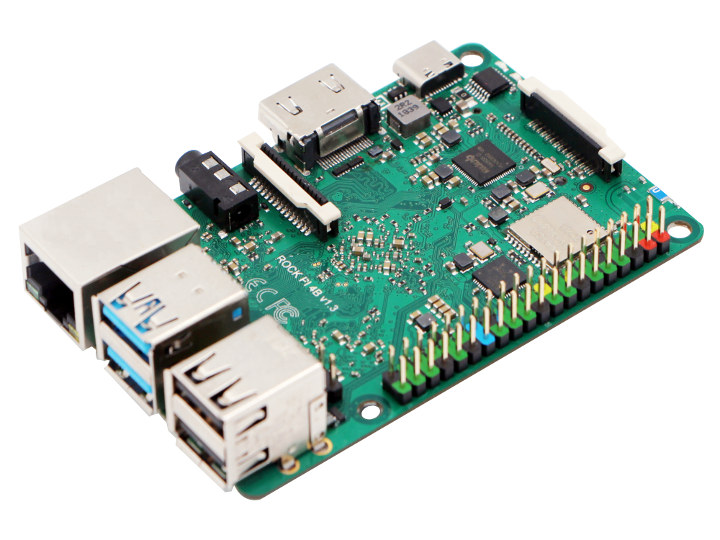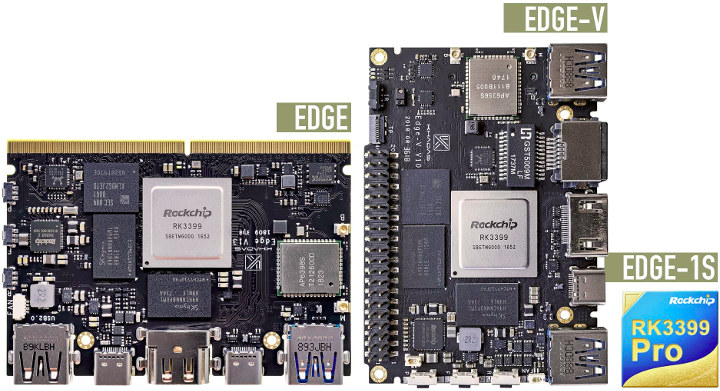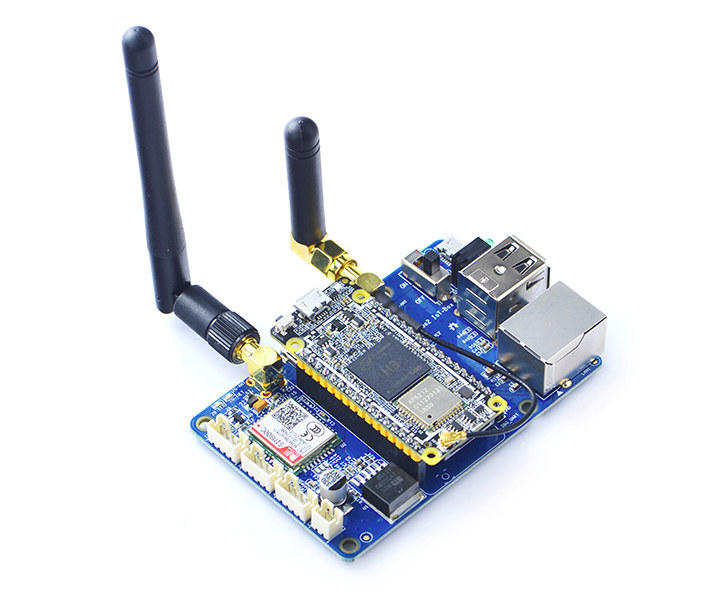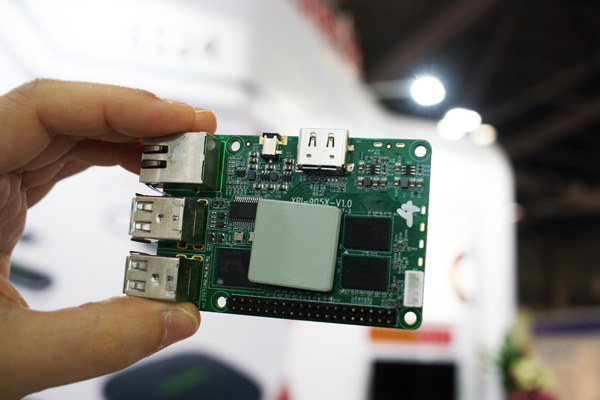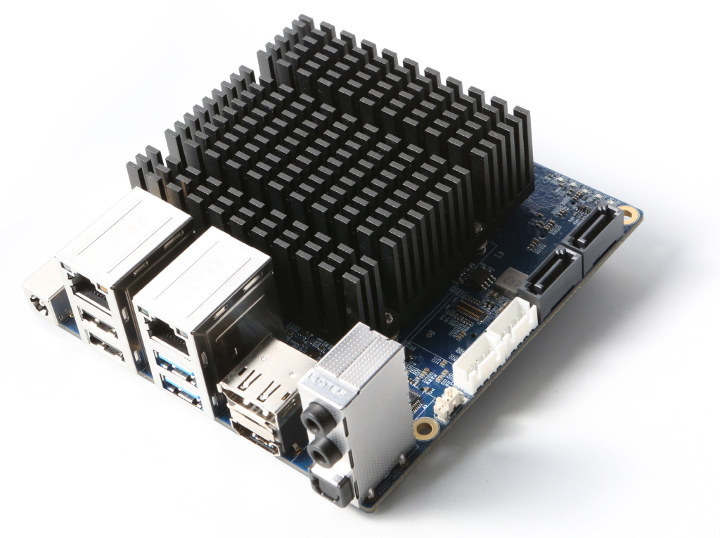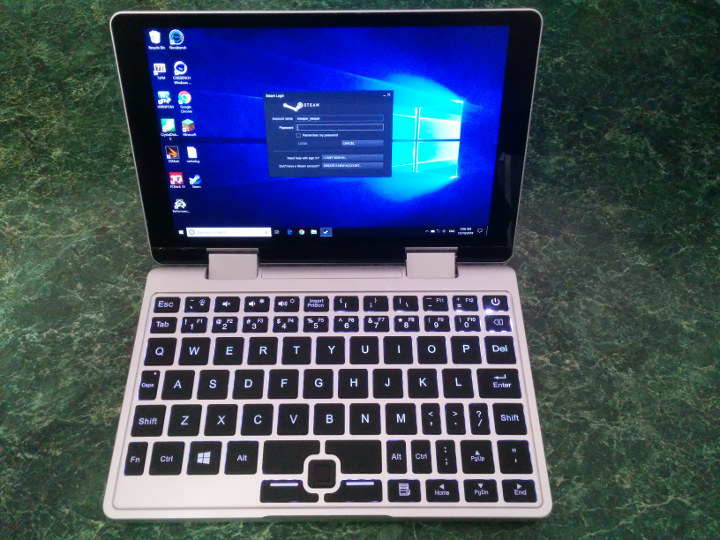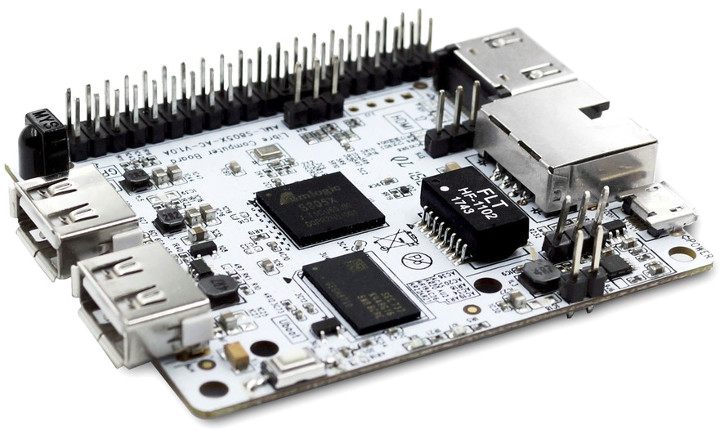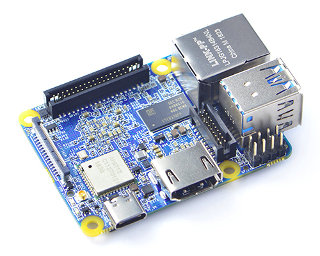The long awaited RPi 4 is almost finally here! Except we’re not talking about Raspberry Pi 4, but Rock Pi 4 designed by Radxa team, back after three years following the launch of Radxa Rock 2 Square, with the new SBC just unveiled by Tom Cubie, Radxa founder. Rock Pi 4 single board computer is powered by a Rockchip RK3399 hexa-core processor coupled with 1 to 4GB RAM, and following Raspberry Pi 3 and ASUS Tinker board form factor. There will be two variants with Rock Pi 4 Model A and Model B sharing most of the same specifications: SoC – Rockchip RK3399 big.LITTLE hexa-core processor with 2x Arm Cortex-A72 @ up to 1.8 GHz, 4x Cortex-A53 @ up to 1.4 GHz, a Mali-T864 GPU with support OpenGL ES1.1/2.0/3.0/3.1, OpenVG1.1, OpenCL, DX11, and AFBC, and a VPU with 4K VP9 and 4K 10-bit H265/H264 decoding System Memory – 1, 2 […]
Khadas Edge RK3399/RK3399Pro Board Crowdfunding Campaign Launched
Khadas Edge is another upcoming Rockchip RK3399 board that we initially covered this summer, and comes with a particular design in the sense it is both a single board computer with USB and Ethernet port, and a system-on-module through its edge connector. Later on we found out, the company was working on a variant called Khadas Edge-V with the edge connector being replaced by a more standard 40-pin header, as well as Khadas Edge1S powered by Rockchip RK3399Pro for AI applications. The company has now launched the three boards and accessories through an Indiegogo crowdfunding campaign. I’ve already covered the two RK3399 boards in previous post, and the RK3399Pro based Khadas Edge-1S (2GB RAM, 2x MIPI-CSI, …) will be similar to Edge board but with , so instead I’ll have a closer look at the specifications for Khadas Captain carrier board for Khadas Edge / Edge-1S: Edge connector – 314-pin […]
Tiny NanoPi Duo2 Board Comes with WiFi, a Camera Interface, an Optional 2G-IoT Dock
NanoPi Duo was launched last year as an ultra-cheap ($8+) Arm Linux board that fits into a breadboard. The board was powered by Allwinner H2+ processor coupled with 256 or 512MB RAM, and the infamous XR819 802.11b/g/n WiFi chip. FriendlyElec has now launched NanoPi Duo2, that’s still breadboard compatible, but with a slightly longer form factor, Allwinner H3 processor, 512 MB RAM, better WiFi thanks to an AP6212 module, and an extra camera interface. As we’ll see further below the company also developed a carrier board for 2G cellular IoT applications. NanoPi Duo2 specifications with highlights in bold showing differences again NanoPi Duo: SoC – Allwinner H3 quad core Cortex A7 processor @ 1.2 GHz with Mali-400MP2 GPU System Memory – 512 MB DDR3 SDRAM Storage – micro SD card slot, footprint for SPI flash Connectivity – 802.11 b/g/n WiFi + Bluetooth 4.0 LE (Ampak AP6212 module) with chip antenna, […]
Geniatech XPI-S905X Board Leverages Raspberry Pi 3 Form Factor
Geniatech is well known in the media player industry for their Amlogic based TV boxes, but in recent years, they’ve also launched some development board from other silicon vendors such as Qualcomm with Developer Board IV and Developer Board 8 powered by respectively Snapdragon 410E and 820E. The company has now launched the XPI family of single board computers that will allow closely follow Raspberry Pi 3 form factor while offering better performance and features. Geniatech will start with XPI-S905X board powered by an Amlogic S905X quad core Cortex A53 processor @ 1.5 GHz with 4K HDR video playback and output capability. Geniatech XPI-S905X board preliminary specifications: SoC – Amlogic S905X quad core ARM Cortex-A53 processor @ up to 1.5 GHz (but they claim 1.6 to 2.0 GHz max…) with penta core ARM Mali-450MP GPU, and Amlogic Video Engine 10 System Memory – 1GB or 2GB (default) DDR3 RAM Storage […]
ODROID-H2 Intel Celeron J4105 Single Board Computer to Launch in November
There were talks about Hardkernel working on an ODROID x86 board since last year, as the CEO expected to launch such board later in 2017 in an interview published in ODROID magazine. Finally, it took them several iterations and processors considerations before being ready for launch, and ODROID-H2 should become available next month as the first ODROID x86 board. ODROID-H2 will feature an Intel Celeron J4105 Gemini Lake processor, two SO-DIMM slots for memory, two SATA ports and M.2 NVMe slot for storage, two Gigabit Ethernet ports, a mix of USB 3.0 and 2.0 ports, and more. ODROID-H2 board specifications: SoC – Intel Celeron J4105 quad core processor @ up to 2.3 GHz (real frequency) with 12EU Intel UHD Graphics 600 System Memory – Dual-channel Memory DDR4-PC19200 (2400MT/s) supporting up to 32GiB RAM in total Storage – M.2 PCIe 2.0 x4 slot for one NVMe storage, 2x SATA 3.0 ports, […]
TopJoy Falcon Review – A Windows 10 Mini Laptop (Prototype)
The Topjoy Falcon is a mini laptop reminiscent of netbooks and similar to the recent GPD Pocket 2 or One Mix Yoga devices. Marketed as an 8 inch (203mm) pocket-sized computer with the following specification: Intel Pentium Silver N5000 CPU 8G RAM 256G SSD disk 1920*1200 FHD IPS touch screen 6000 mAh battery for up to 8 hours working time 1 x USB A 3.0, 1 x USB Type-C 1 x 3.5mm headphone jack 1 x Mini HDMI port Active cooling 802.11ac WiFi, Bluetooth 4.0 Backlit keyboard Windows 10 Home Weight 550g (1lb 3oz) Fits easily in your pocket Although you would need a large pocket as whilst It is physically small consisting of an approximately 8″ by 5.2” and about 0.7” thick (203mm x 132mm x 18mm) when closed it is in reality too big for the average pocket. It will soon be available on Kickstarter with an early bird price of $399 and an expected retail price of […]
La Frite Amlogic S805X Board Runs Mainline Linux, Goes for $5 and Up (Crowdfunding)
Libre Computer first started with their AML-S905X-CC (aka Le Potato) board powered by Amlogic S905X processor last year, and they’ve since then launched several other boards based on Allwinner or Rockchip processor. But their latest “La Frite” board – also known as AML-S805X-AC – is an even lower cost version of the “Le Potato” board, with an Amlogic S805X processor limited to 1080p60 output and video decoding, a smaller footprint based on the one for Raspberry Pi Model A+, and price starting at just $5 on Kickstarter. AML-S805X-AC “La Frite” board specifications: SoC – Amlogic S805X quad core ARM Cortex-A53 processor @ 1.2 GHz with penta core ARM Mali-450MP GPU @ 650 MHz, and Amlogic Video Engine 10 System Memory – 512 MB or 1GB DDR4 @ 2400 MHz Storage – eMMC module connector, 128 Mb SPI NOR flash Video & Audio Output – HDMI 2.0 port Video Codecs Decoding […]
NanoPi NEO4 is the Cheapest & Smallest RK3399 Board So Far
As you should be well aware the RK3399 SBC market is quite crowded these days, and FriendlyELEC had already released two Rockchip RK3399 boards with NanoPC-T4, and NanoPi M4 boards. But the company has now announced another board – as expected – with NanoPi NEO4, the smallest and cheapest RK3399 board on the market at this point. NanoPi NEO4 board specifications: SoC – Rockchip RK3399 big.LITTLE hexa-core processor with 2x Arm Cortex-A72 @ up to 2.0GHz, 4x Cortex-A53 @ up to 1.5GHz, a Mali-T864 GPU with support OpenGL ES1.1/2.0/3.0/3.1, OpenVG1.1, OpenCL, DX11, and AFBC, and a VPU with 4K VP9 and 4K 10-bit H265/H264 decoding System Memory – 1GB DDR3-1866 Storage – eMMC module socket, micro SD card slot Video & Audio Output – HDMI 2.0a up to 4K @ 60 Hz with HDCP 1.4/2.2 support Camera – 1x 4-lane MIPI-CSI connector for camera up to 13MP Connectivity – Gigabit […]


